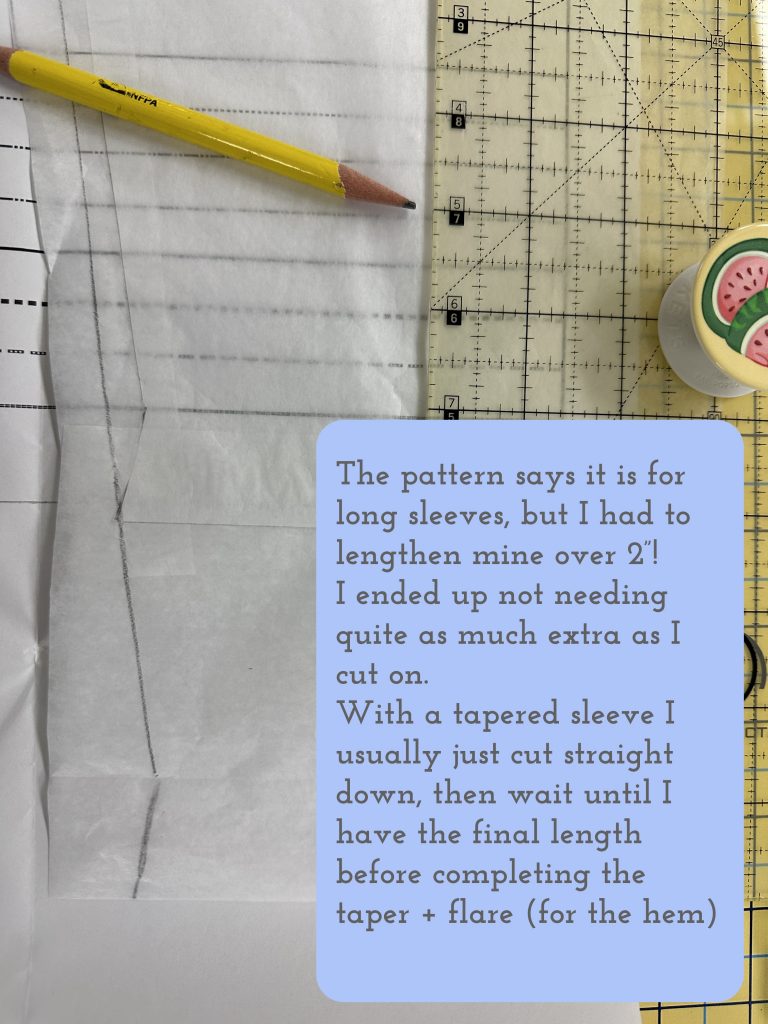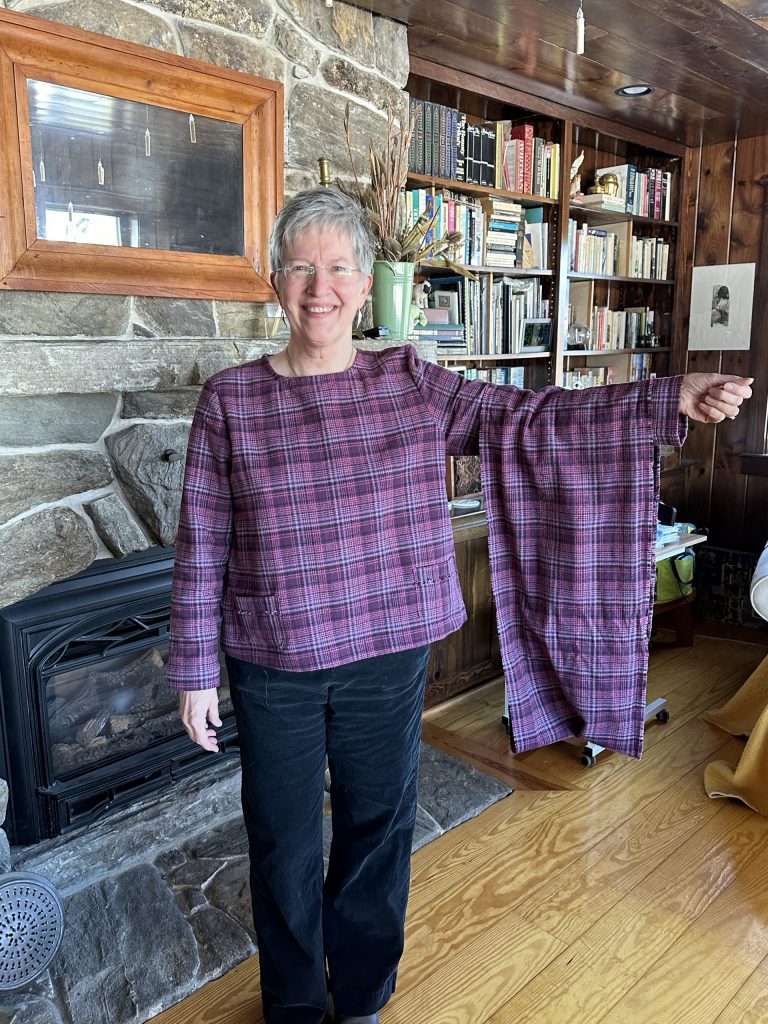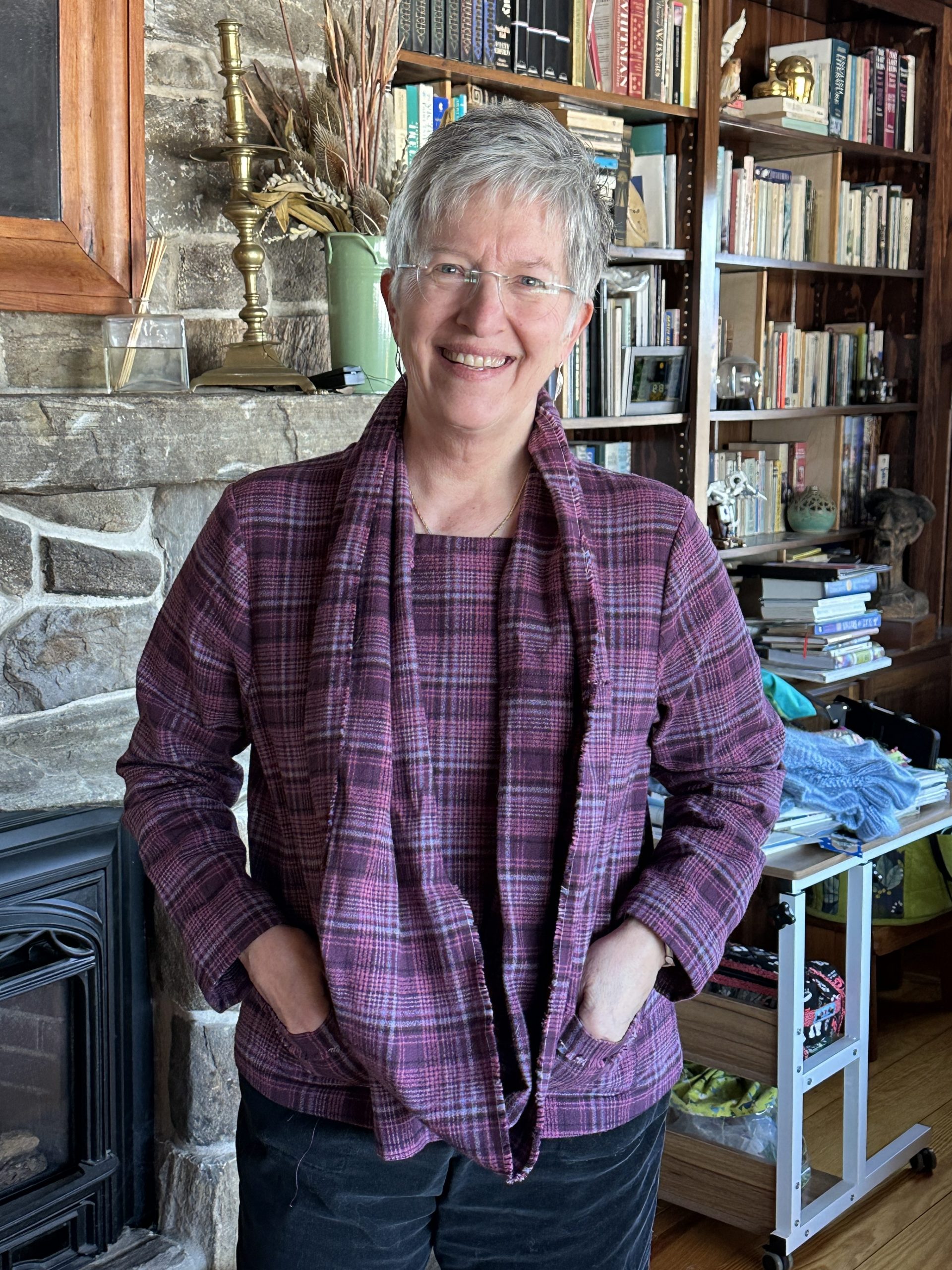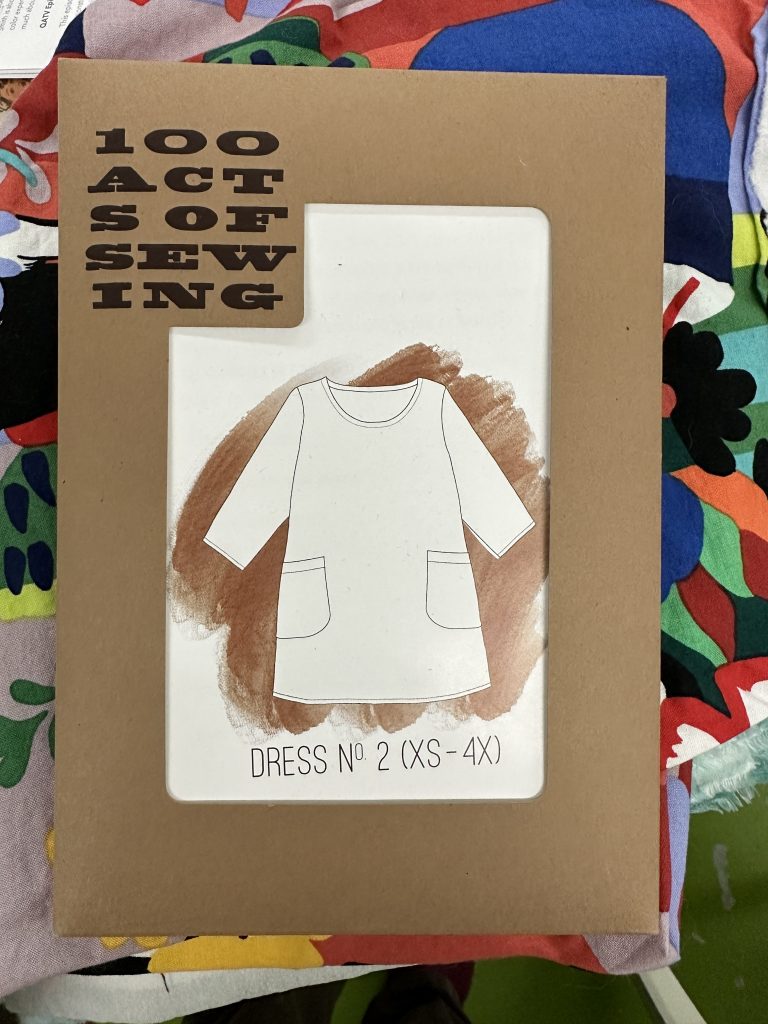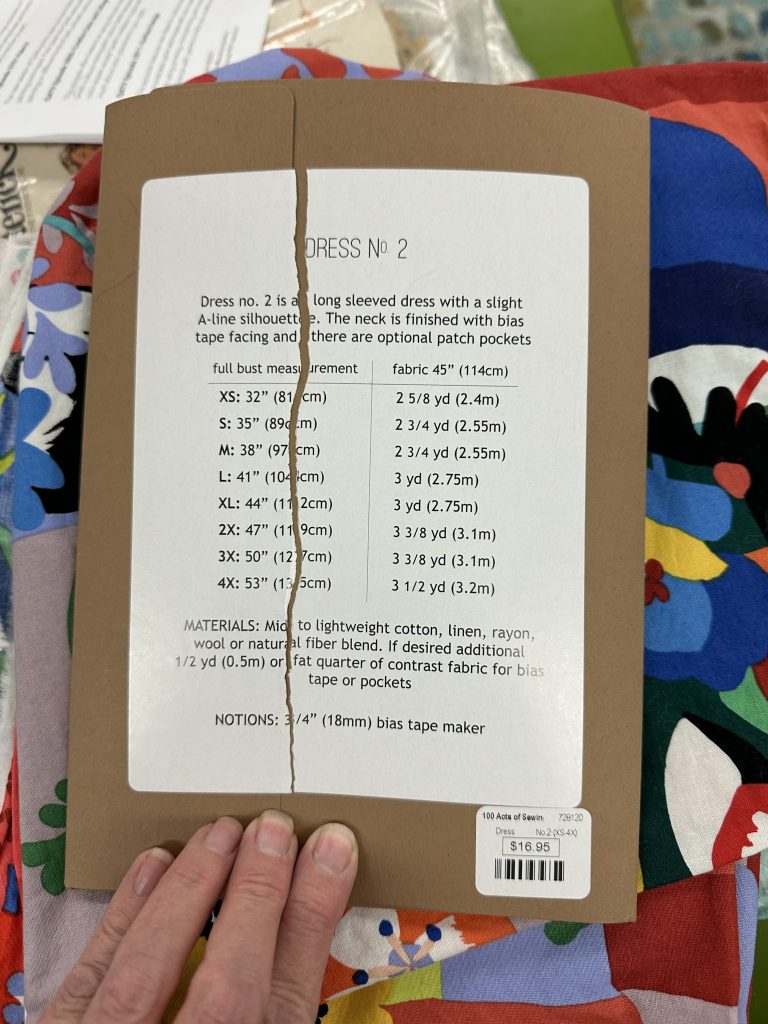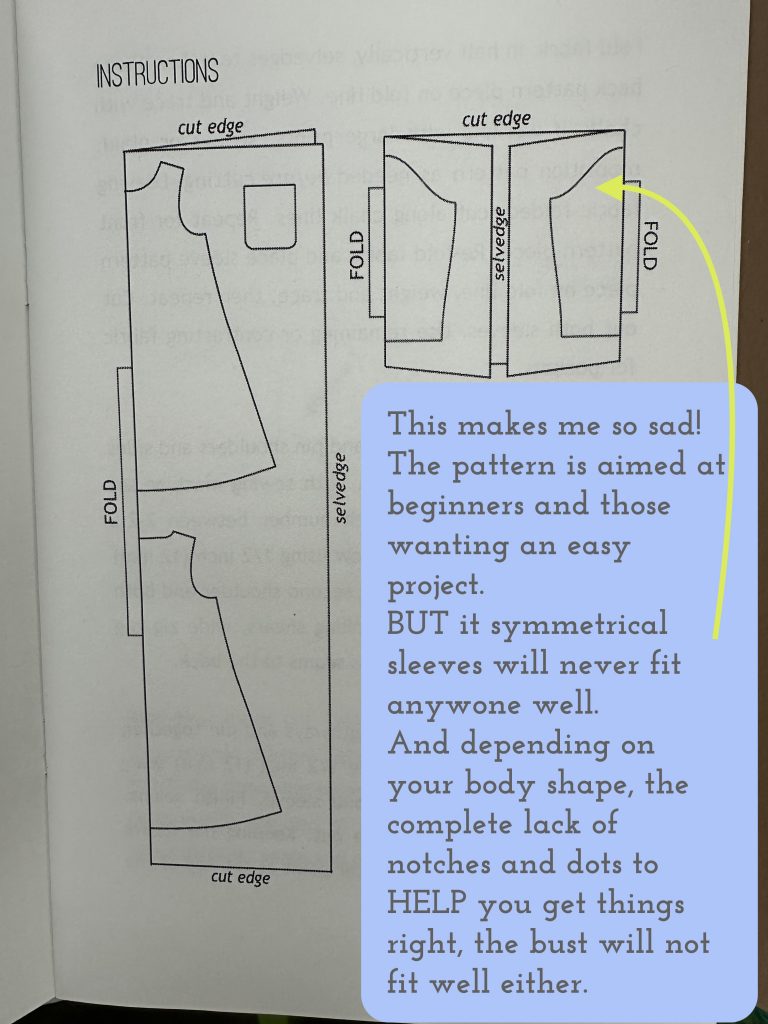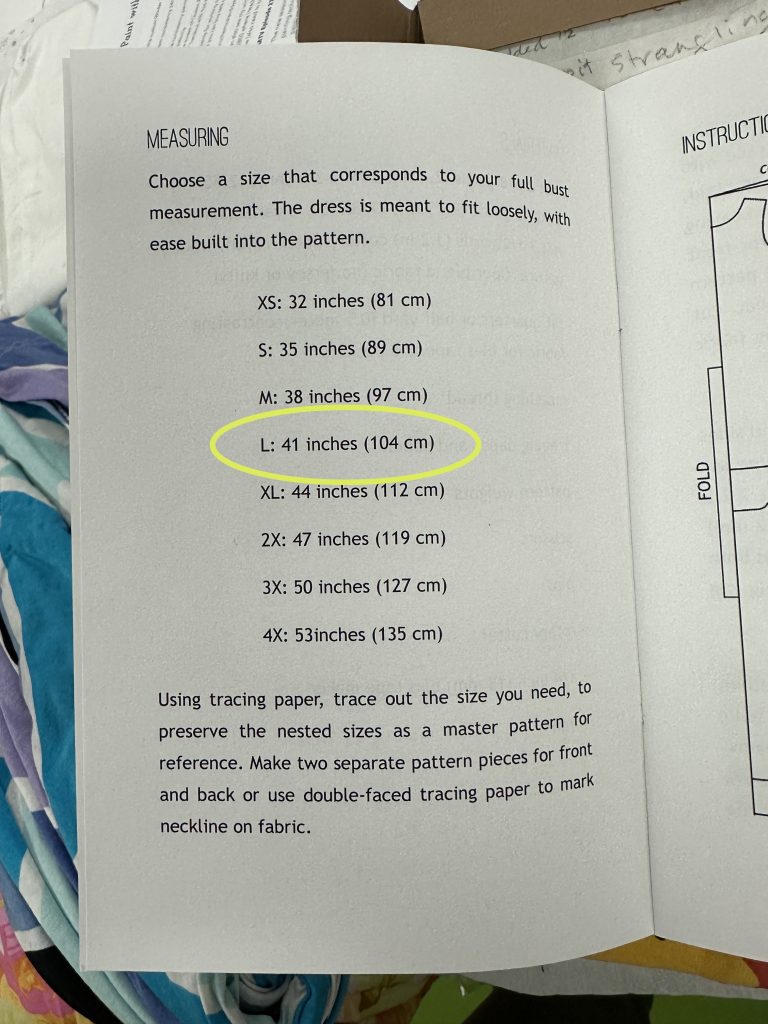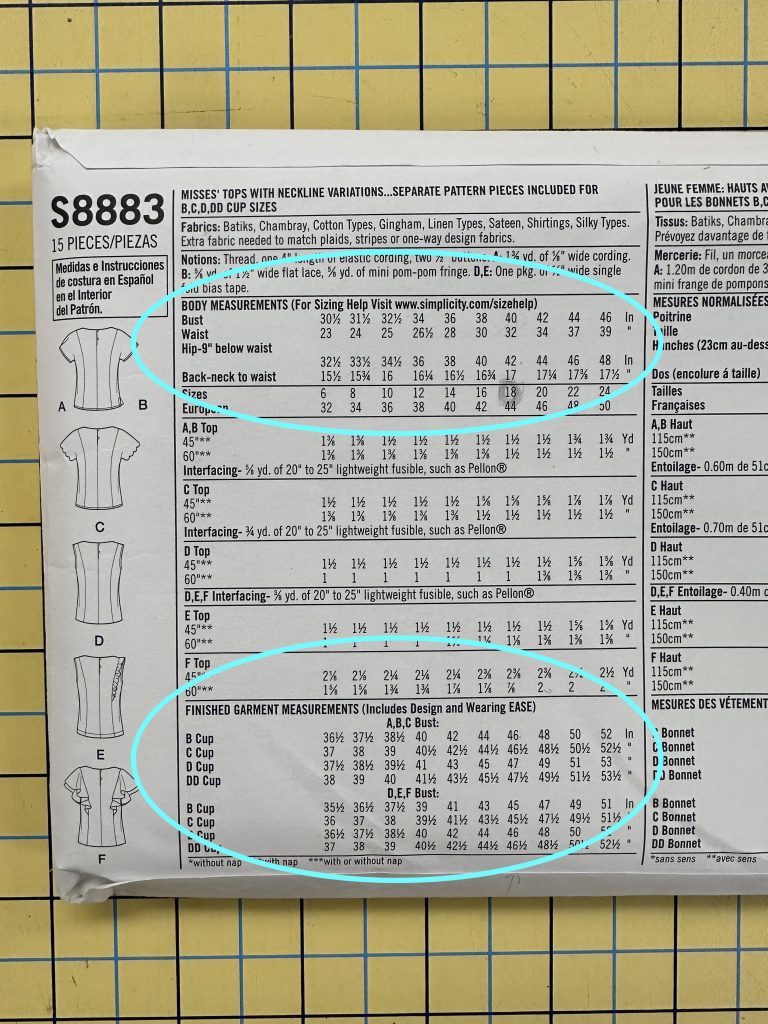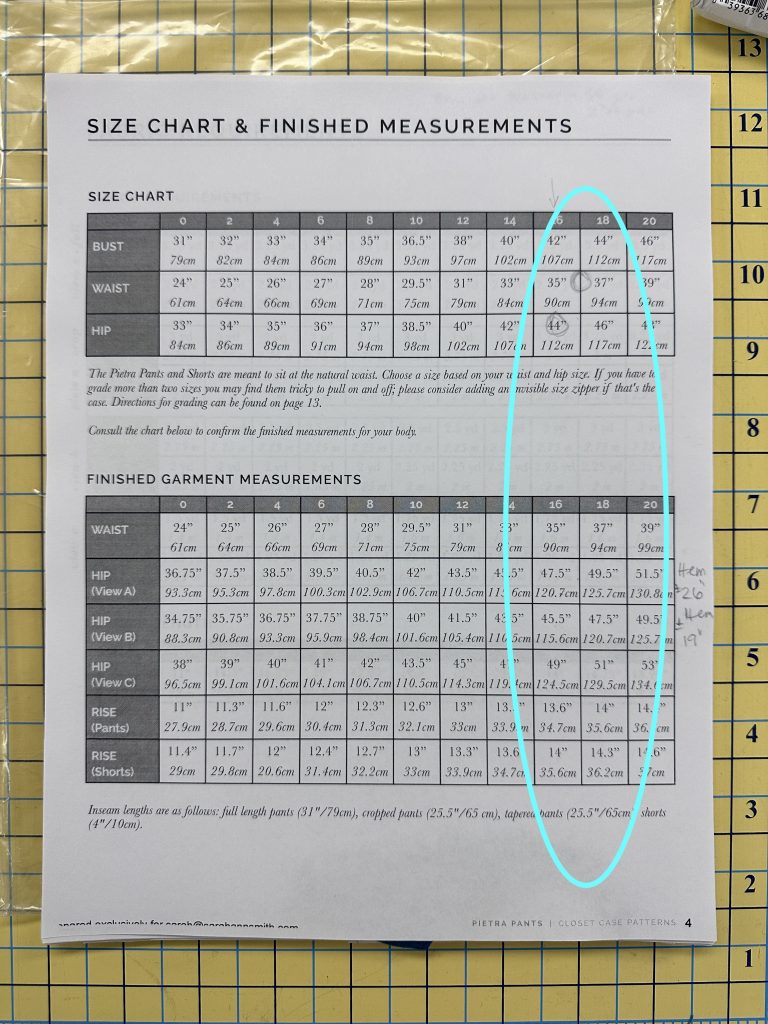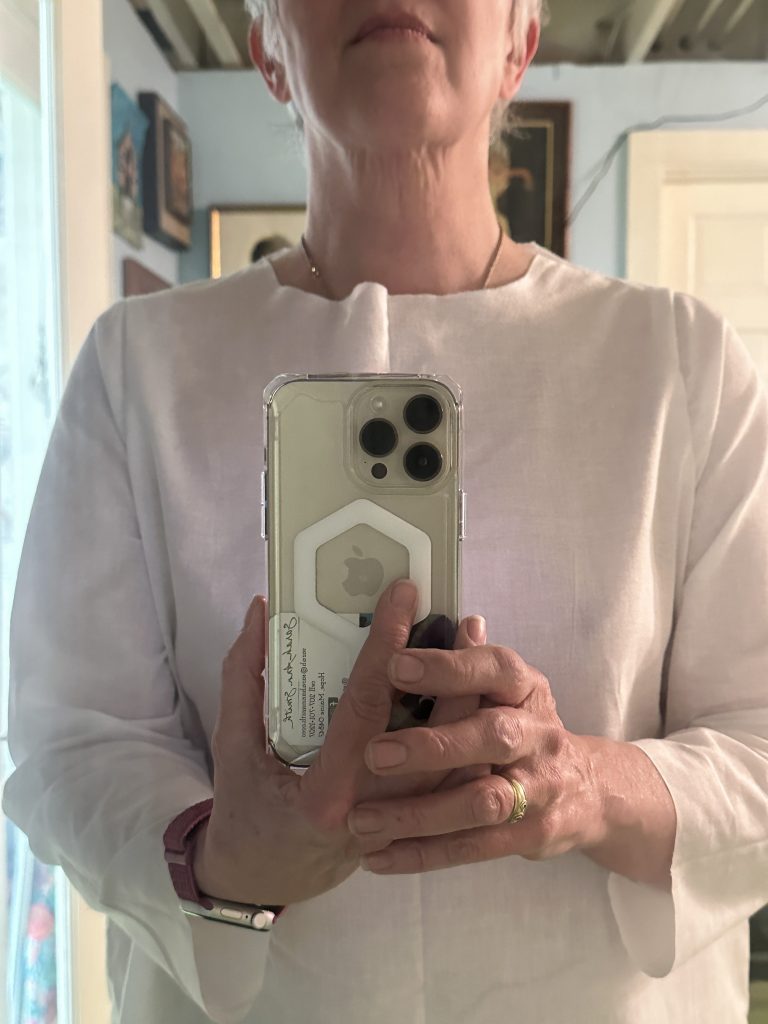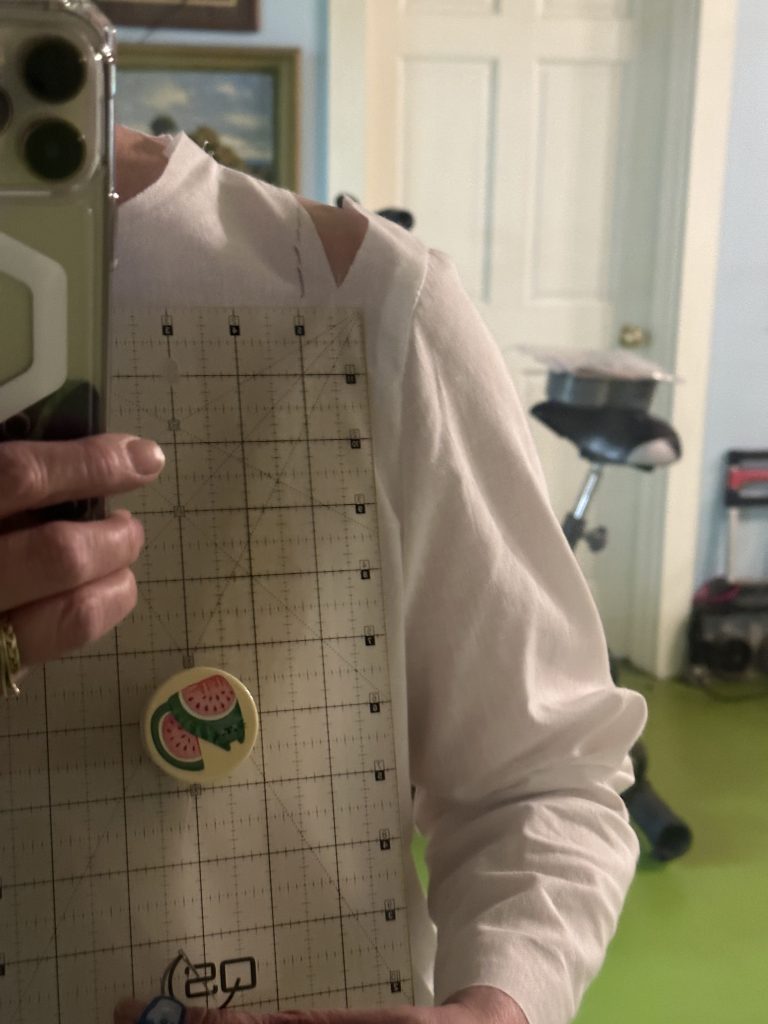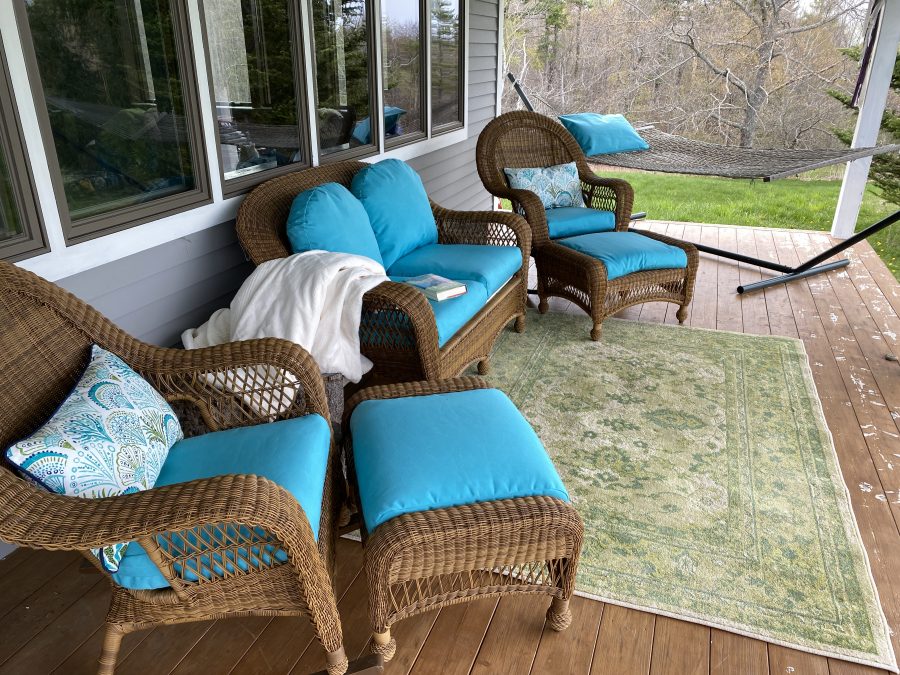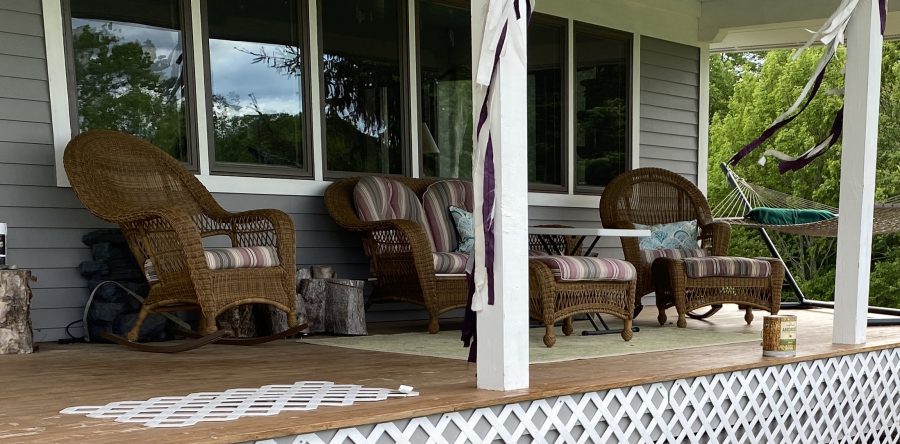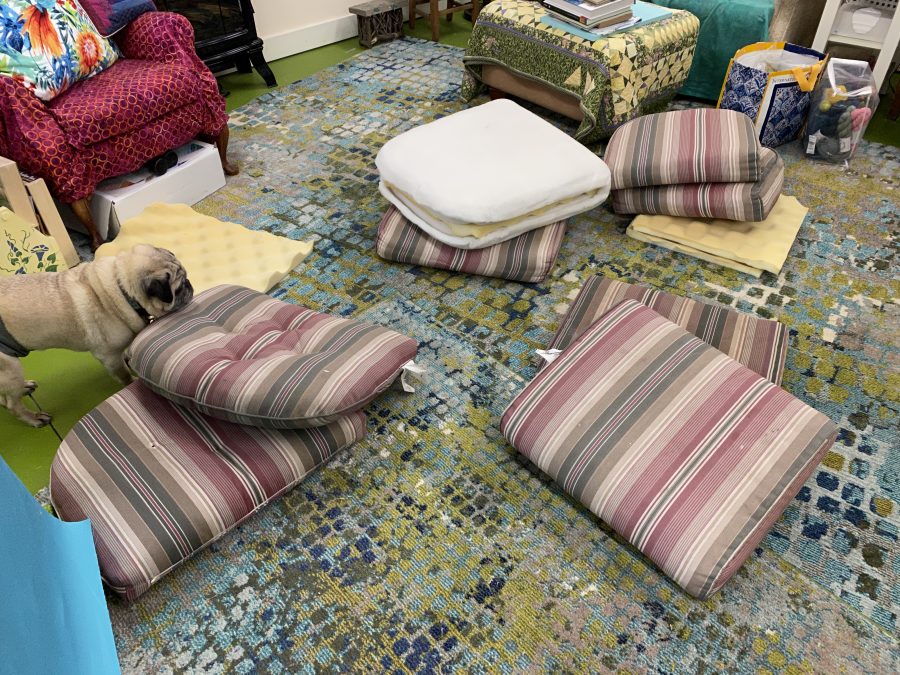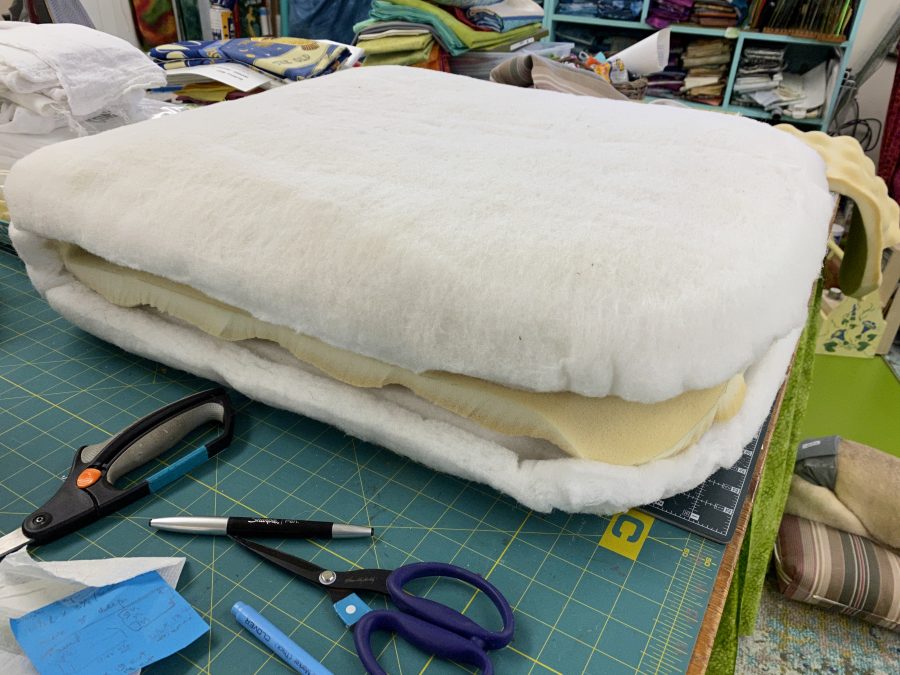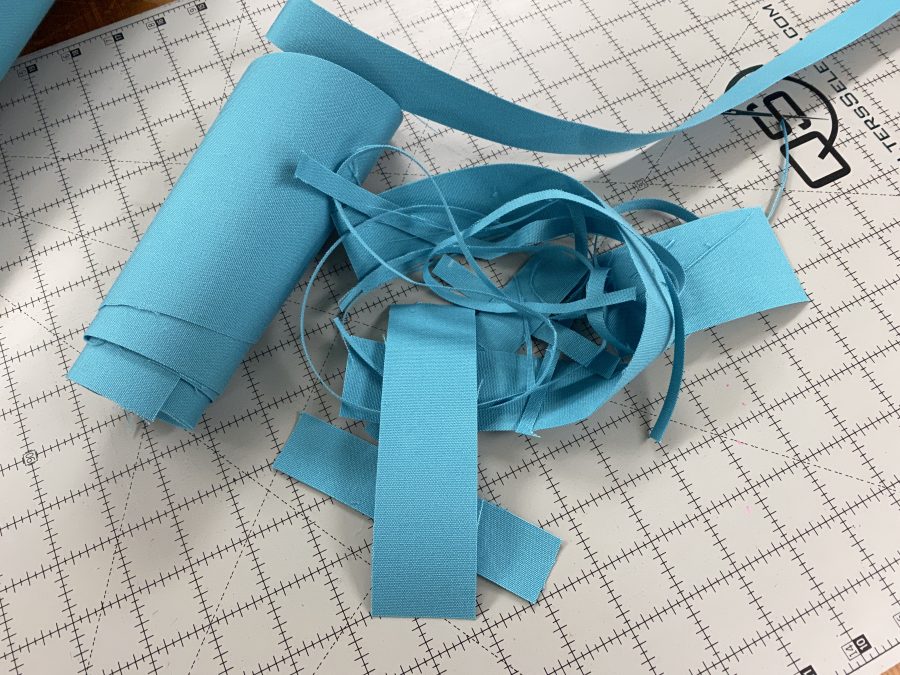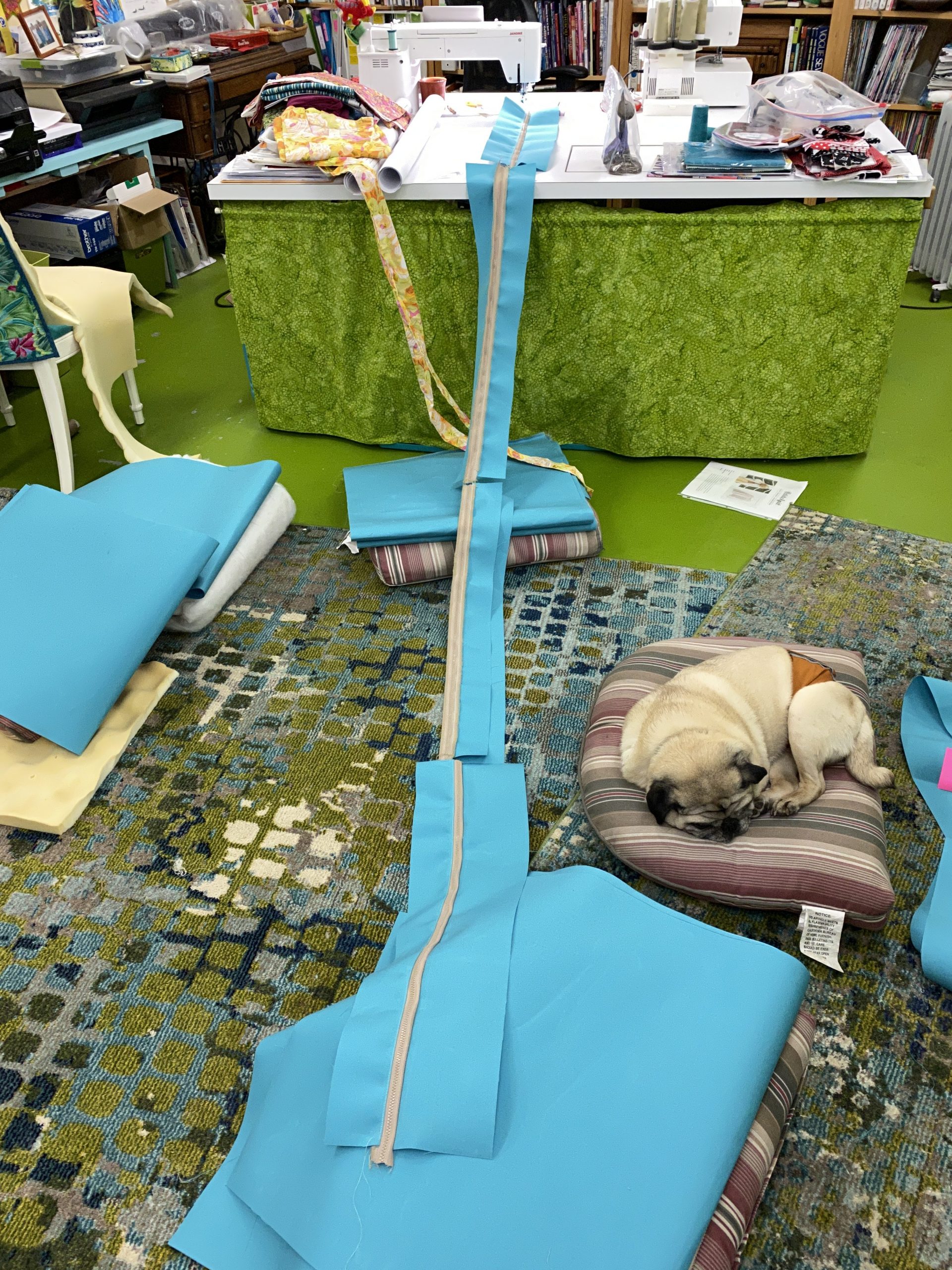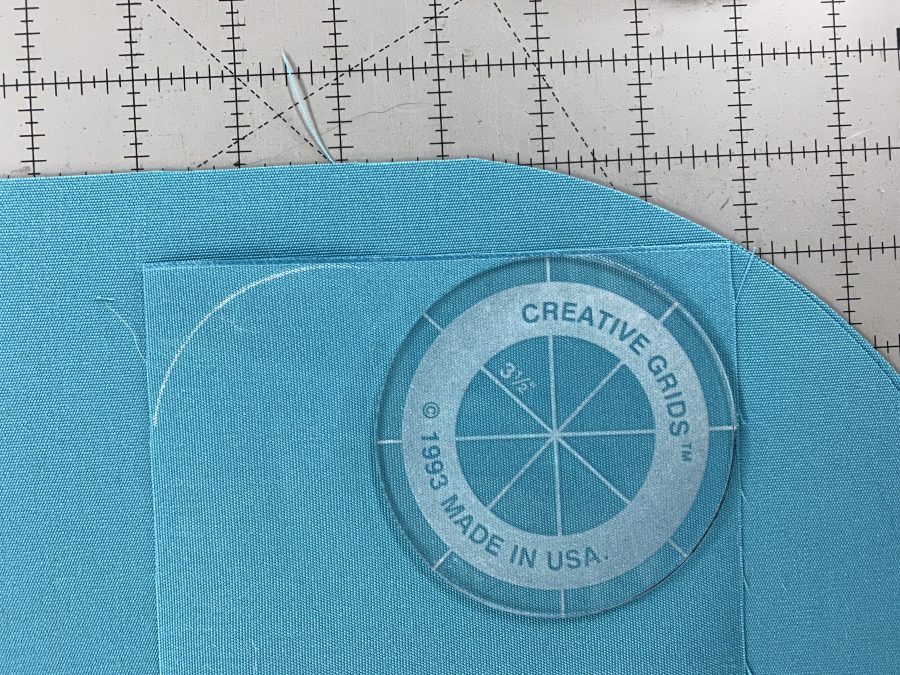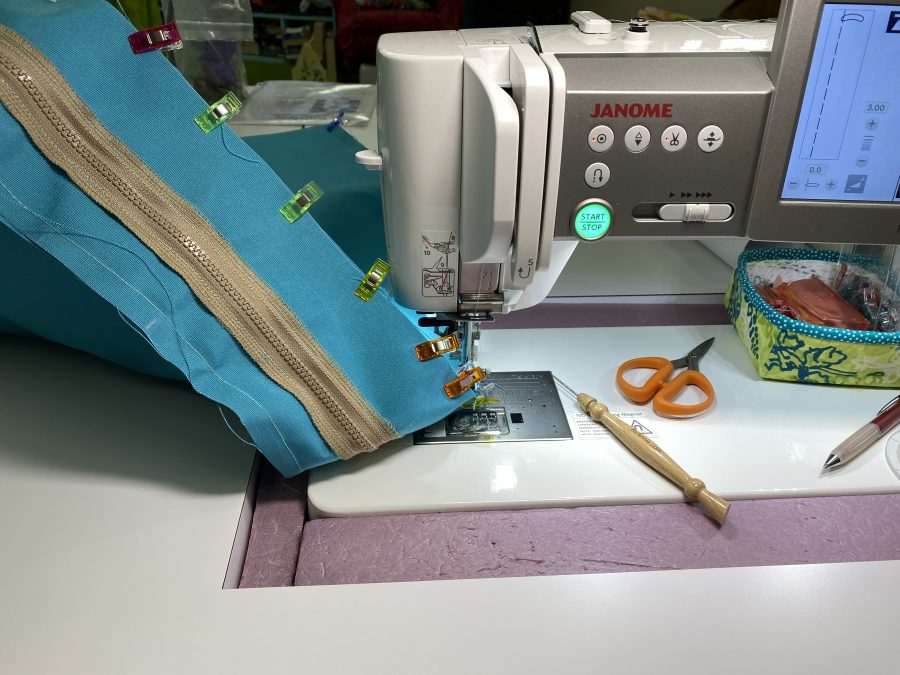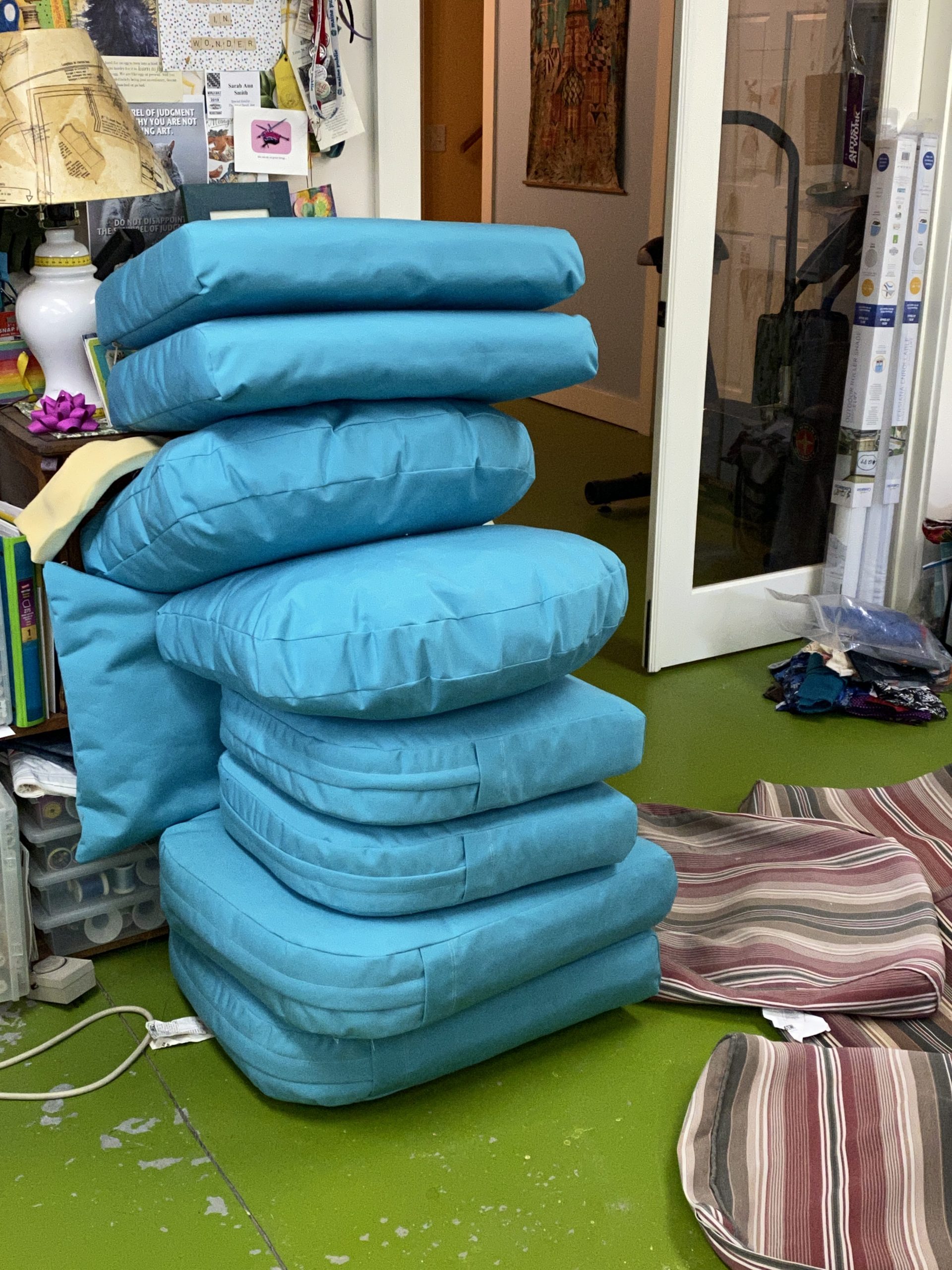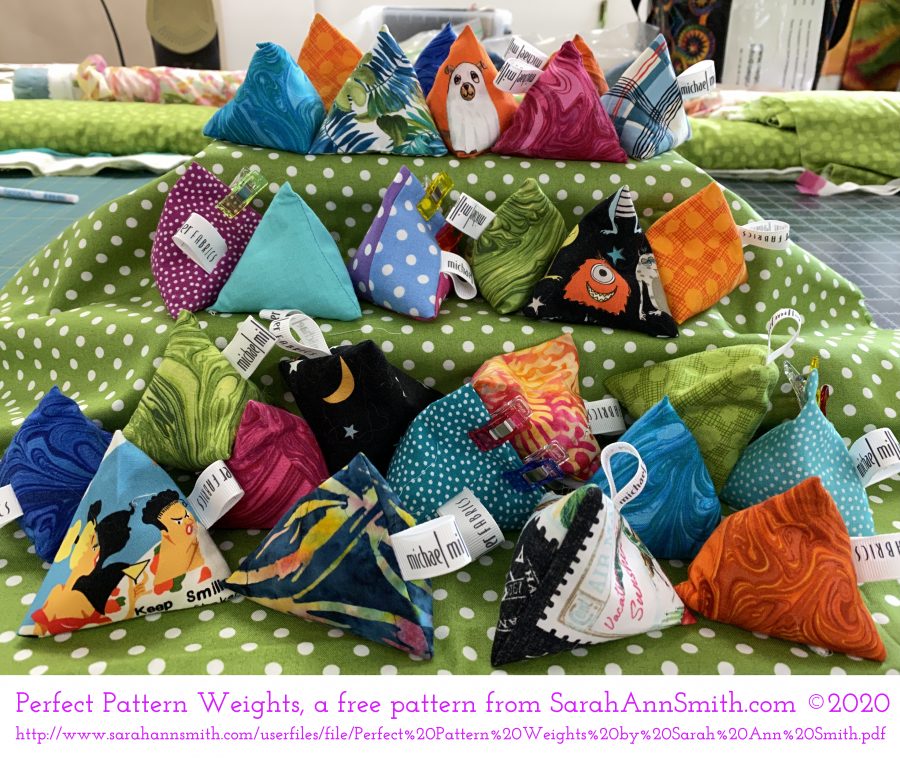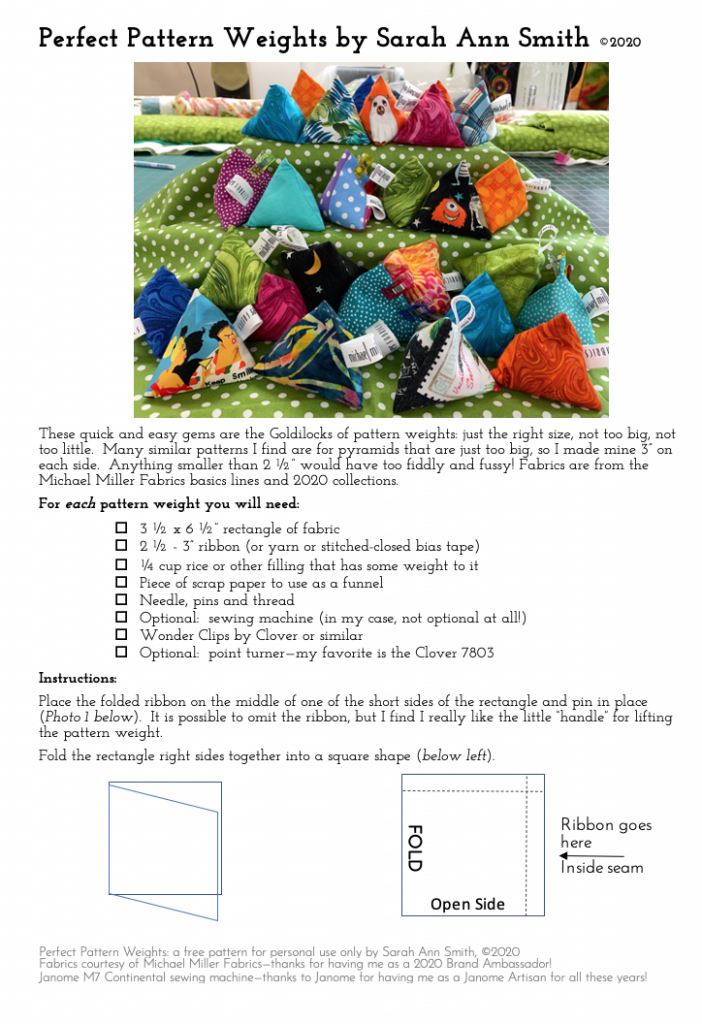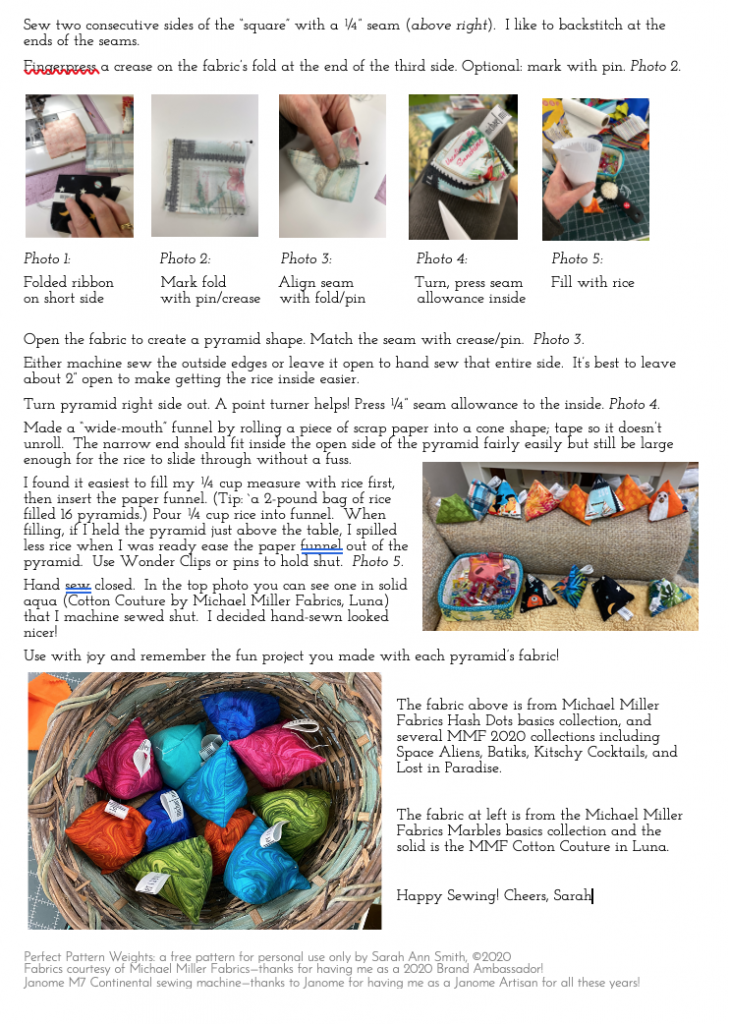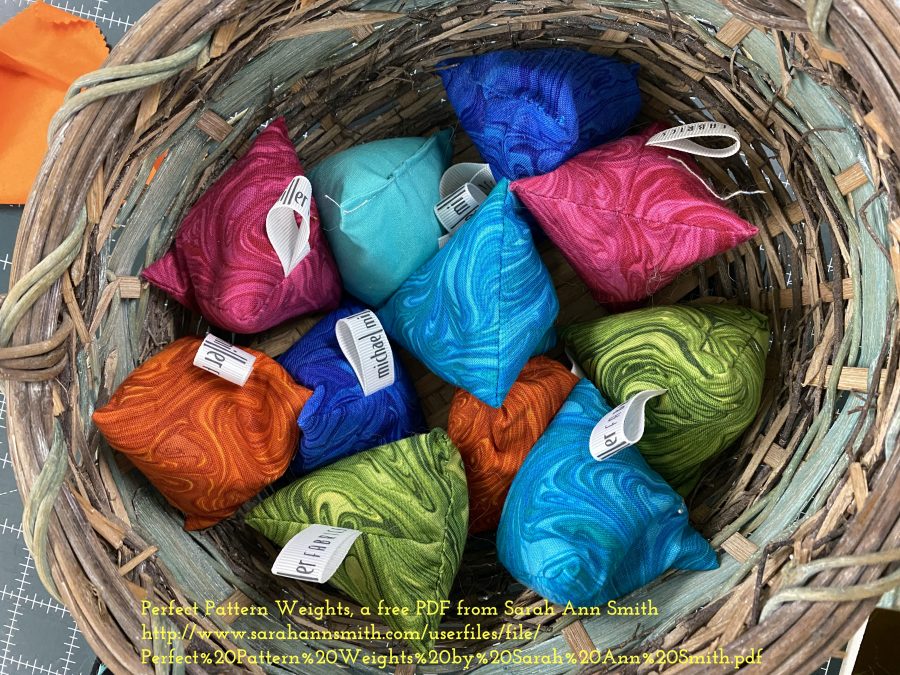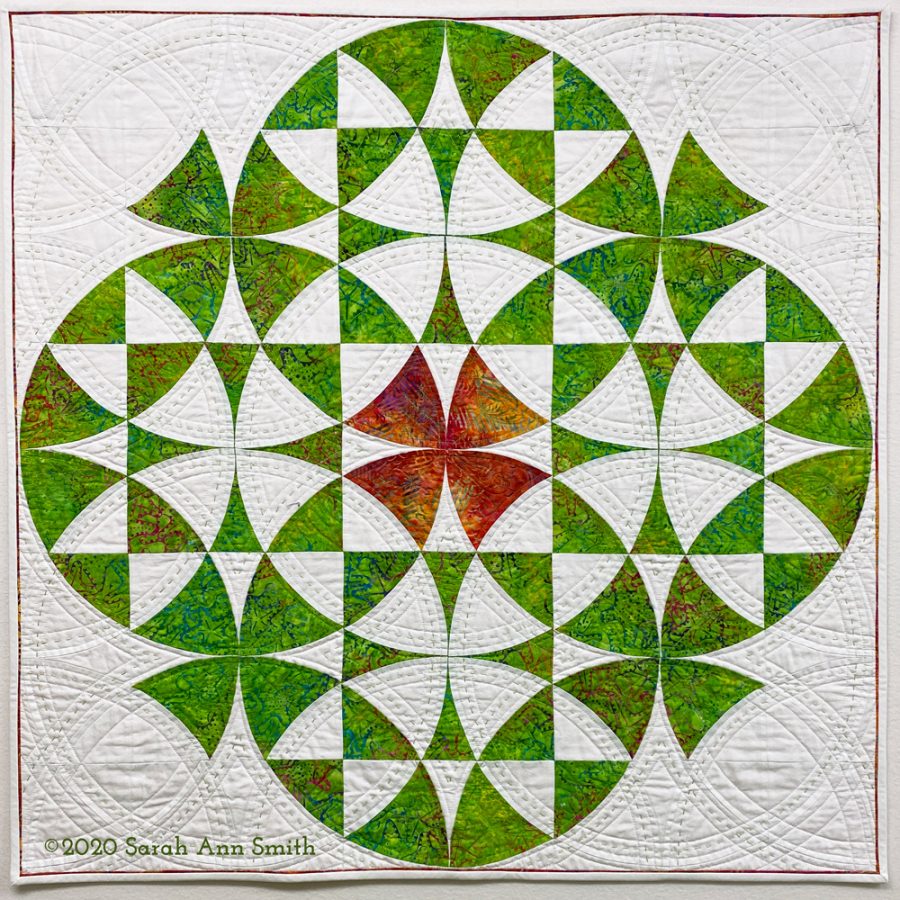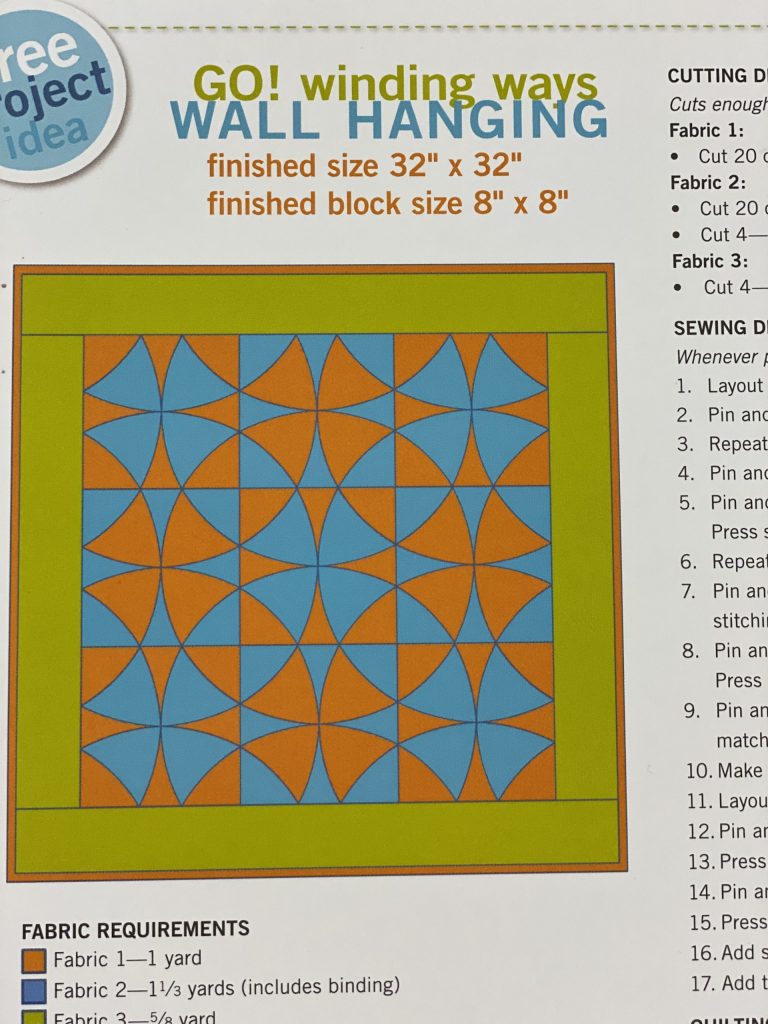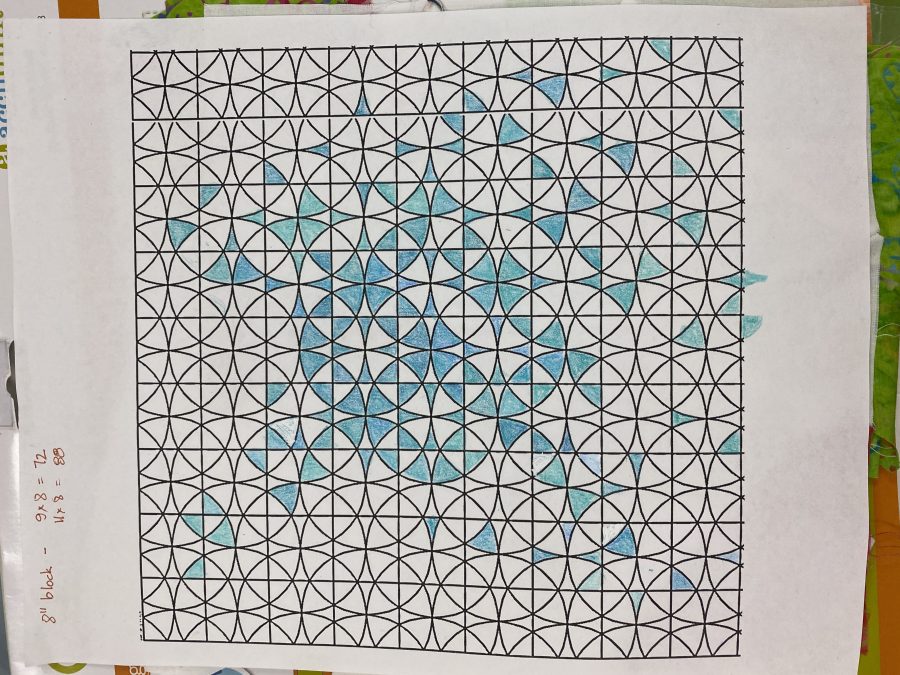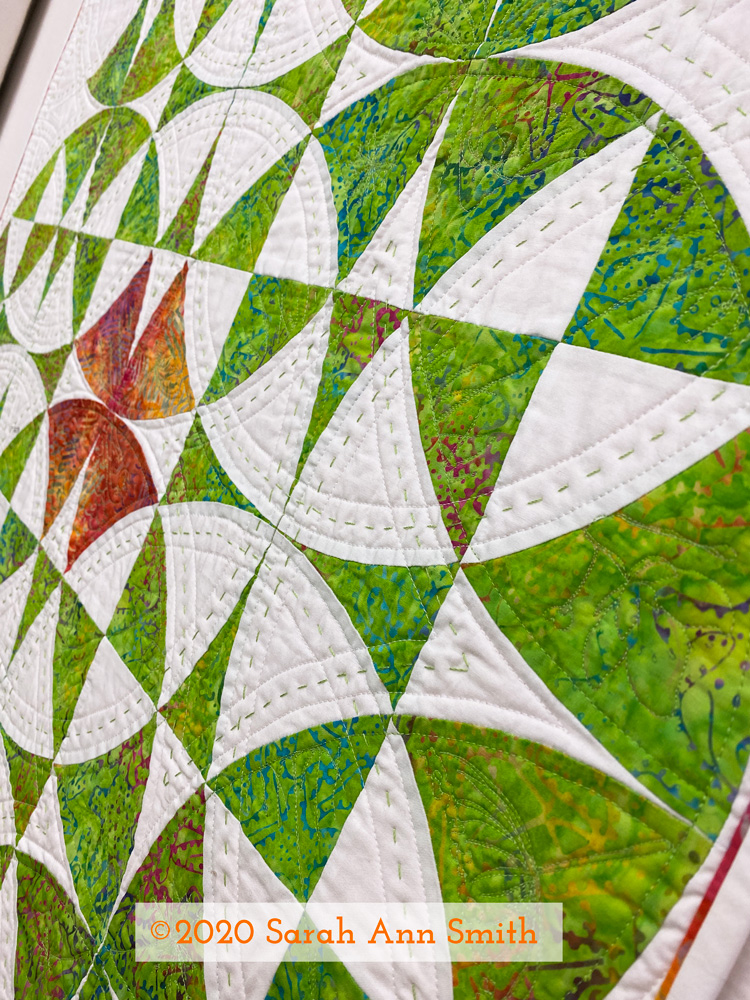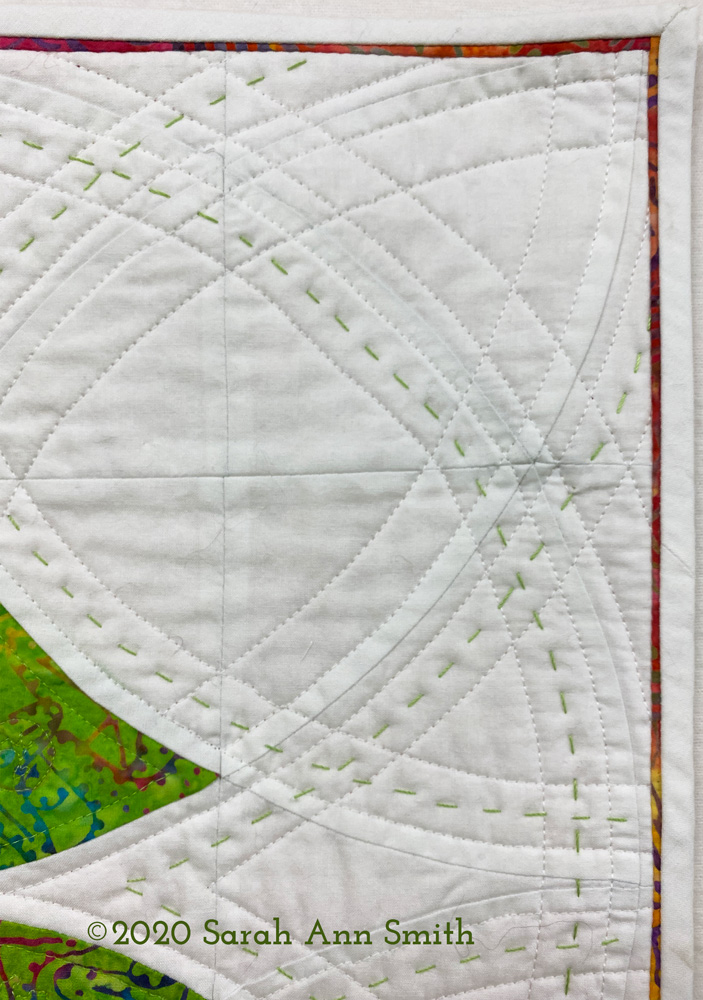Plaid Top Tutorial: Lesson 2-Make a muslin, fitting and sleeves
Tuesday, February 21st, 2023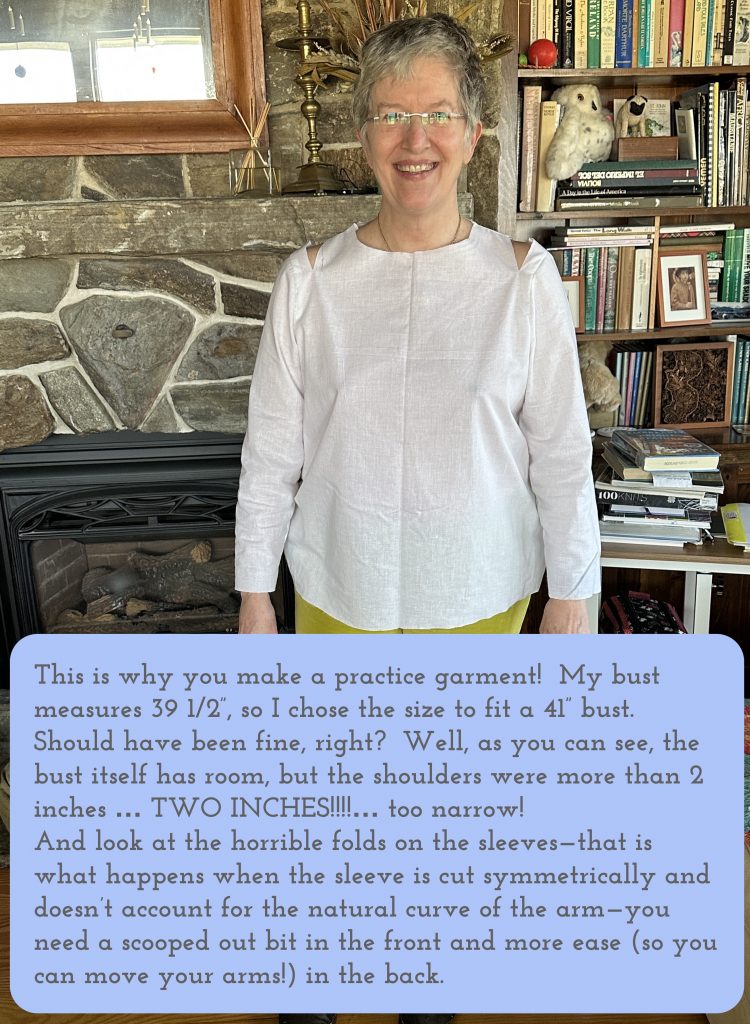
At the end of Lesson 1, I was showing you how far off the fitting is in this pattern when applied to my body: broad shoulders, small bust.
Please note: I am affiliated with Janome as a Janome Artisan and am compensated. However, my reviews are honest and I would say what I say whether affiliated or not. I’ve also chosen to be affiliated with Janome since 2003 (!!!) because their machines are so good and they are so responsive to the interests and needs of their customers.
There’s a LOT of detail in this post, but if you read through you’ll learn why it’s a joy and a wonder when you can find a pattern that works for your body. And once you make any necessary changes, it is fairly easy to use that pattern and make variations on the theme. Somewhere down below I mention taking a WONDERFUL, highly-recommended, can’t say enough good tings about Garment Makers Question Time with Philippa Naylor. I have been sewing over 55 years. Others in the class have never made a garment. Yet we ALL are learning and getting good results! You start out easy with a shift dress, move to a skirt, on up to rain jackets and fancy stuff! I got sidetracked with life last year but can’t wait to get back to it. Her work experience in the garment industry long before she became a quilter is golden.
It’s kinda like prepping a house to paint it–you have to do the yucky sanding and spackling and priming or the paint job won’t turn out well now matter how good the paint and painter. This is the prep work part of a successful garment!
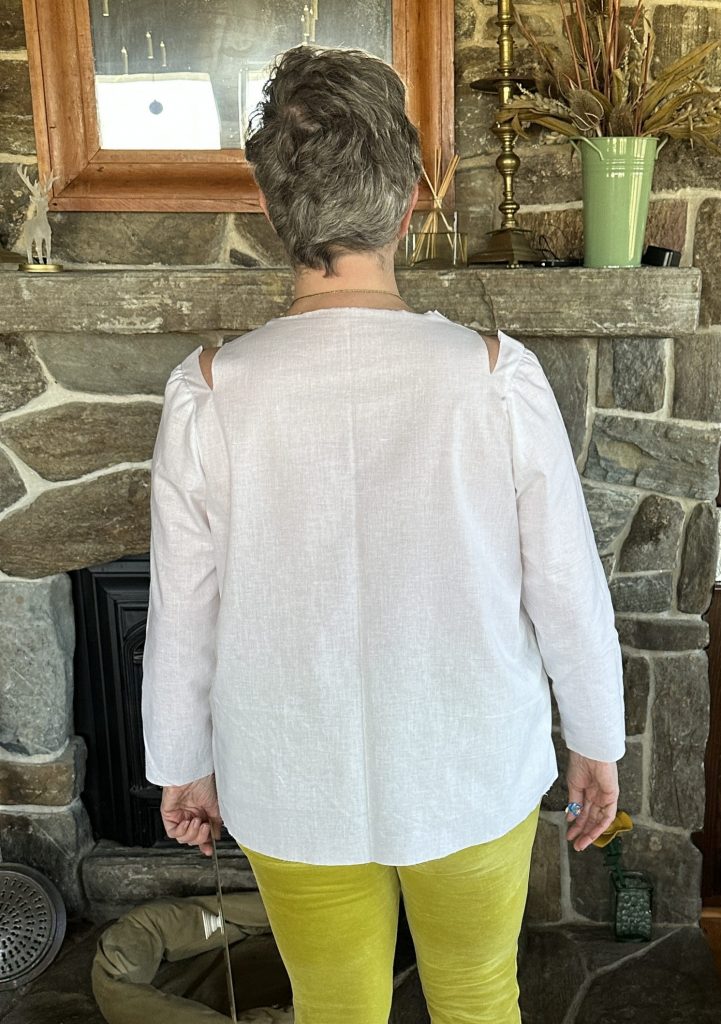
View from the back..see those pull lines across the upper back, that means even with the slices it is still too tight! Part of the problem is that the pattern sleeve pieces are cut without a front/back to the sleeve cap.
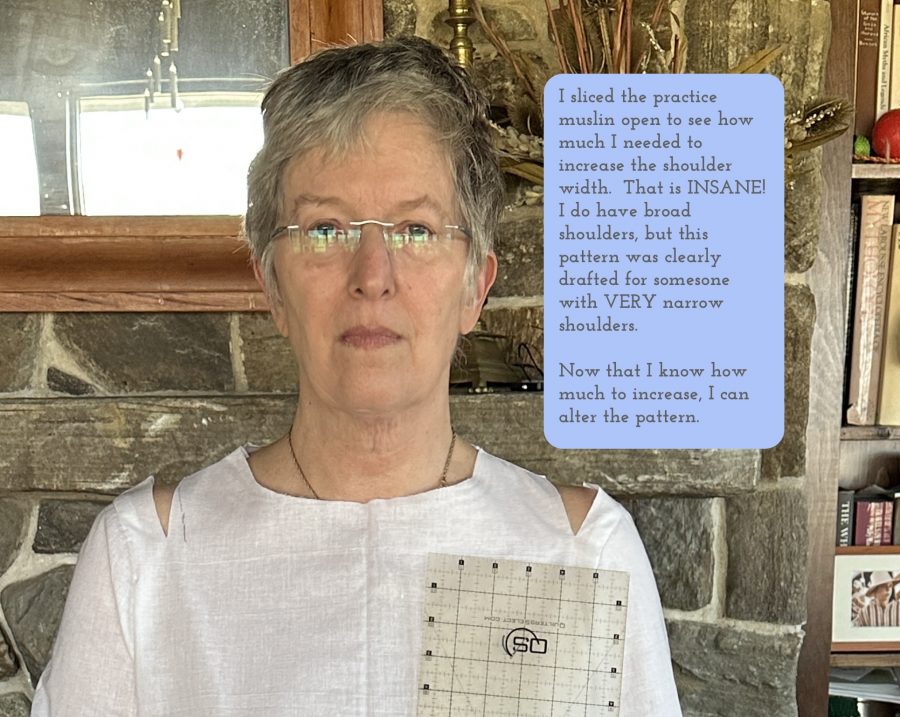
A close up of the top…holding a ruler to show how much I need to alter the pattern to make it anywhere near fitting properly. There are many books and videos and workshops to learn how to do this, but the one that finally made it click and work for me was GMQT. Your mileage may vary, you may grasp the concepts well from some of the tried-and-true books from the 80s even. But this is how I finally “got it.”
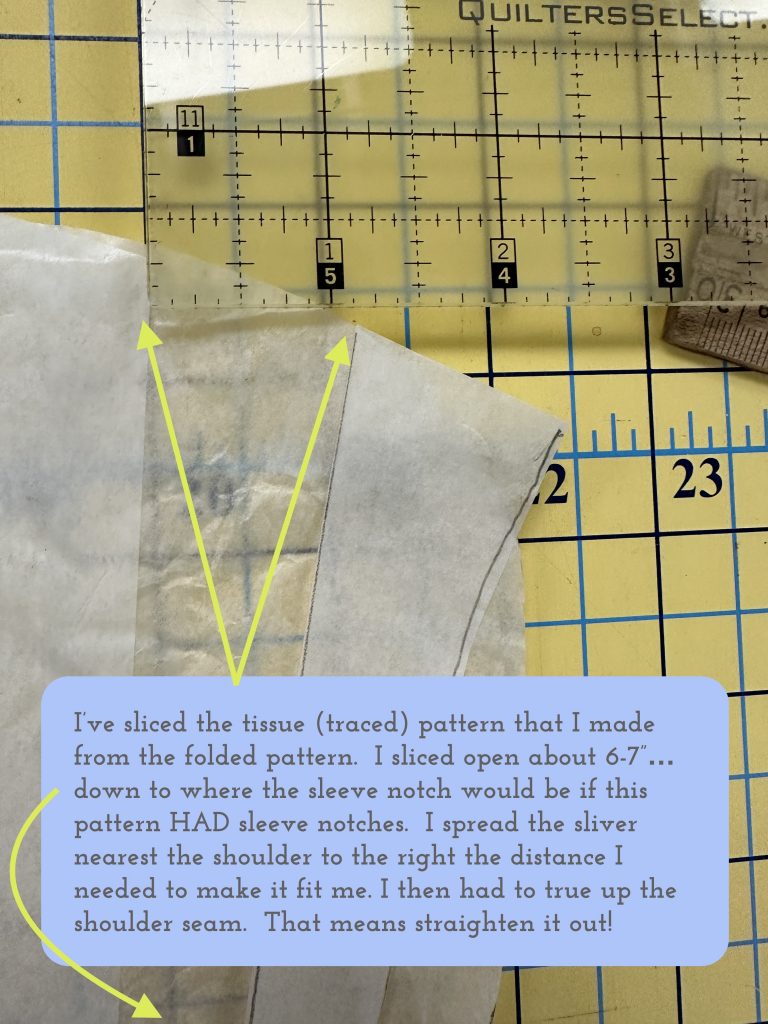
There are MANY resources, from books to youtube to online and in person classes to learn about fitting. A year ago I signed up for Philippa Naylor’s Garment Makers’ Question Time, a 12-month series of classes for a price that is modest, especially considering the vast amount of knowledge and content. I HIGHLY RECOMMEND THIS WORKSHOP GMQT.co.UK (not affiliated, just a happy student). Finally, after making clothes for more than 50 years, I feel confident in making alterations. The caption on the photo explains what I did to make it fit.
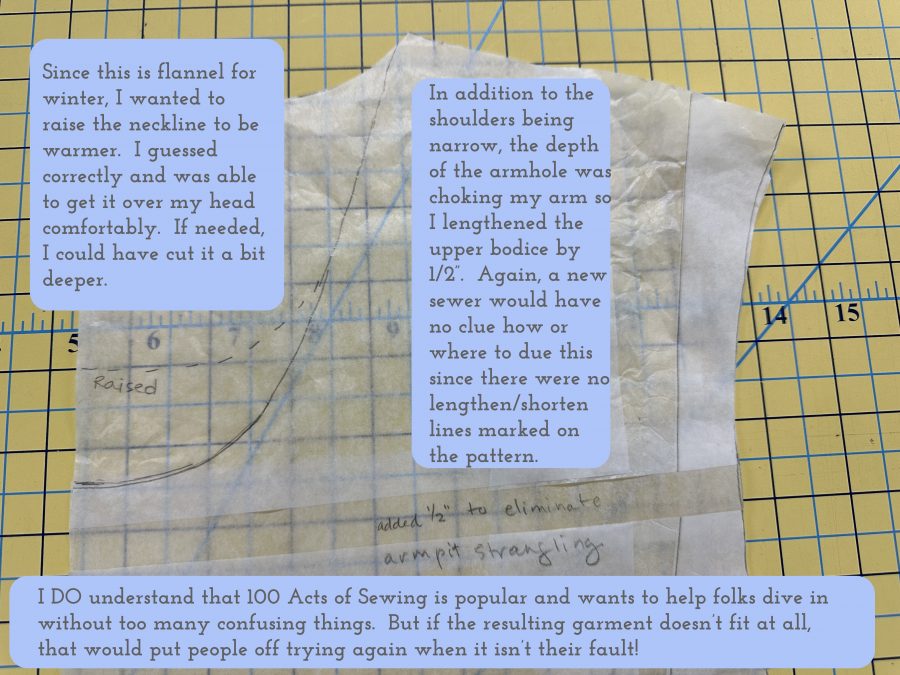
The upper bodice area was also too short…not enough room for my arms to move, so I lengthened by 1/2″. You can see the pencil notes… I made the cut perpendicular to the center front, spread the pieces and inserted more paper. I guesstimated where to make this change since the pattern itself does not include the standard lengthen/shorten here markings. I also raised the neckline since this is a winter top and Maine is cold!
I knew that the sleeve pattern was a problem as soon as I saw that it was cut symmetrically. If you look at a human body from the side, the arm curves to the front. A sleeve needs to do the same, not hang like a plumb line from the shoulder point. The fact that the pattern piece was symmetrical (cut on the fold) meant it could never fit properly. I knew I could modify a sleeve pattern piece from another pattern if the length of the seams matched closely enough to make it work.
I used a technique I learned in GMQT.co.UK that is called “walking the seam.” You measure the length of the SEAM line, not the edge of the pattern piece on, in this case, the armhole opening and the top of the sleeve. Luckily, my pattern piece from a different garment was within 1/4″.
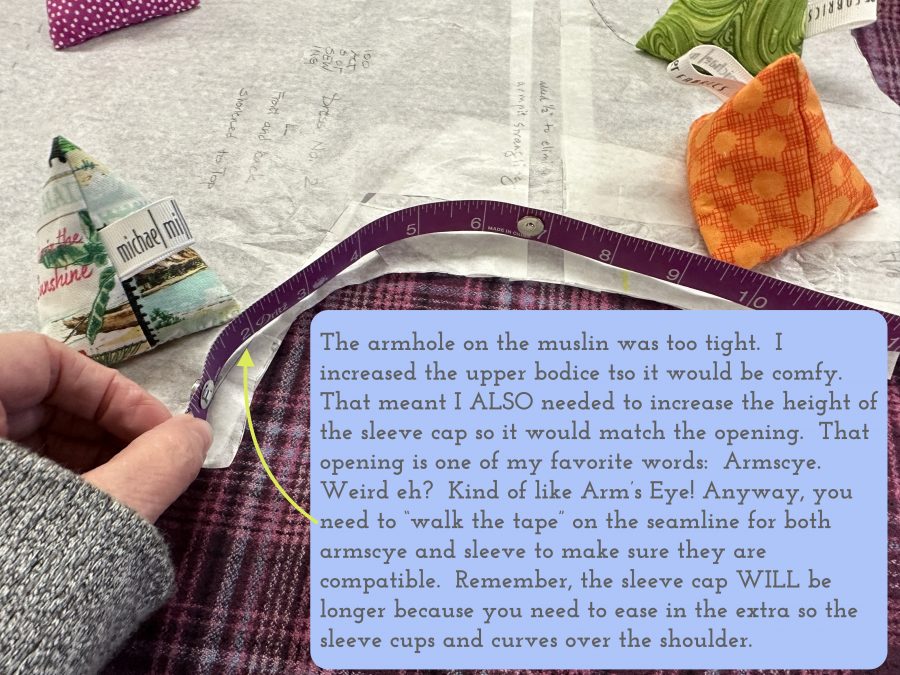
To “walk the seam” you set your tape measure on its edge, and measure along what will be the seamline. After adding in the extra 1/2″ length (you can see the taped insert in the photo above), that changed the side seam length, which meant I needed to make sure the front side seam matched the back side seam (easily done since it is just a straight line). See next photo. PS–if you want to make pattern weights like mine, my free tutorial is here.
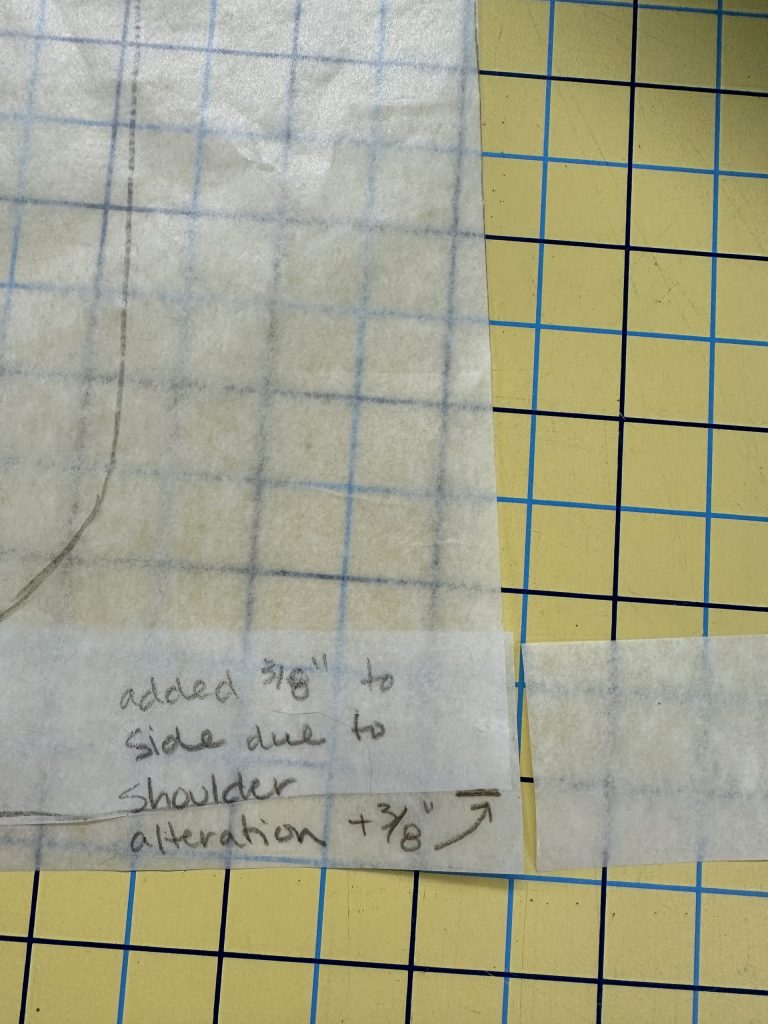
This is the bottom front of the garment. Because of the changes to fix the narrow shoulders and shallow armpit, it altered the side seam, so I had to lengthen the side seam so the front and back side seams would be the same length.
I looked in my collection of patterns–yes, I have patterns going back to the 1970s!–and found one with a sleeve I thought would work. It did!
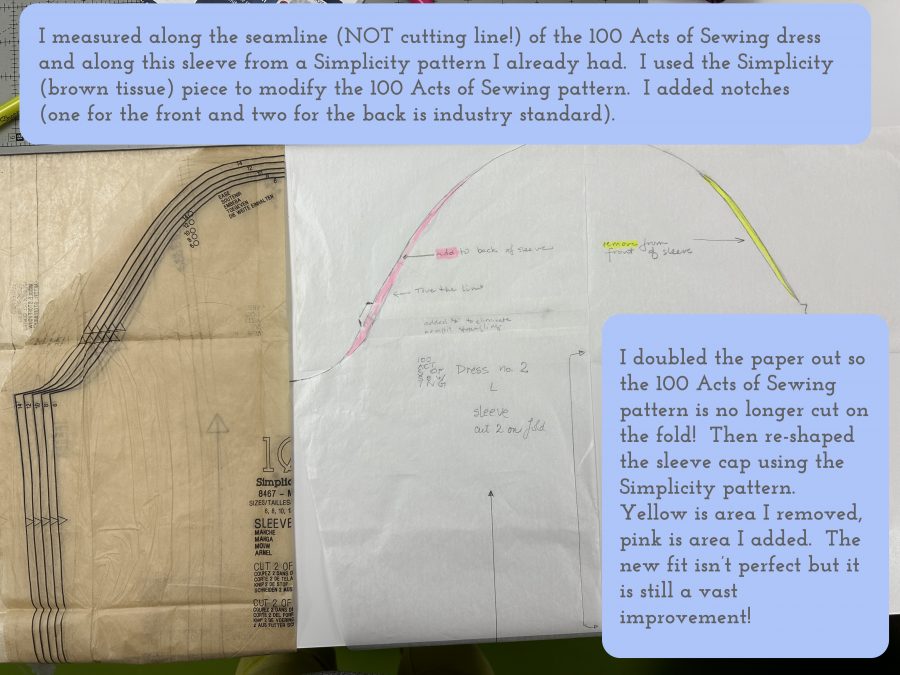
In the next photo you will see notches and dots. These are standard in the pattern industry. One notch on a sleeve usually means the front of the sleeve, two notches is the back side of the sleeve. Dots are used for various purposes. Sometimes they show where to run gathers from one spot to the next. Other times they indicate where you match up the shoulder seam. That means you can distribute the easing/gathering on the sleeve cap so the sleeve actually FITS and runs around the body in a way that allows you to move your arm. Sorry–but I was just SO frustrated with this pattern. It is, sadly, destined to make new sewers think they can’t do anything right, when the error lies in the pattern!
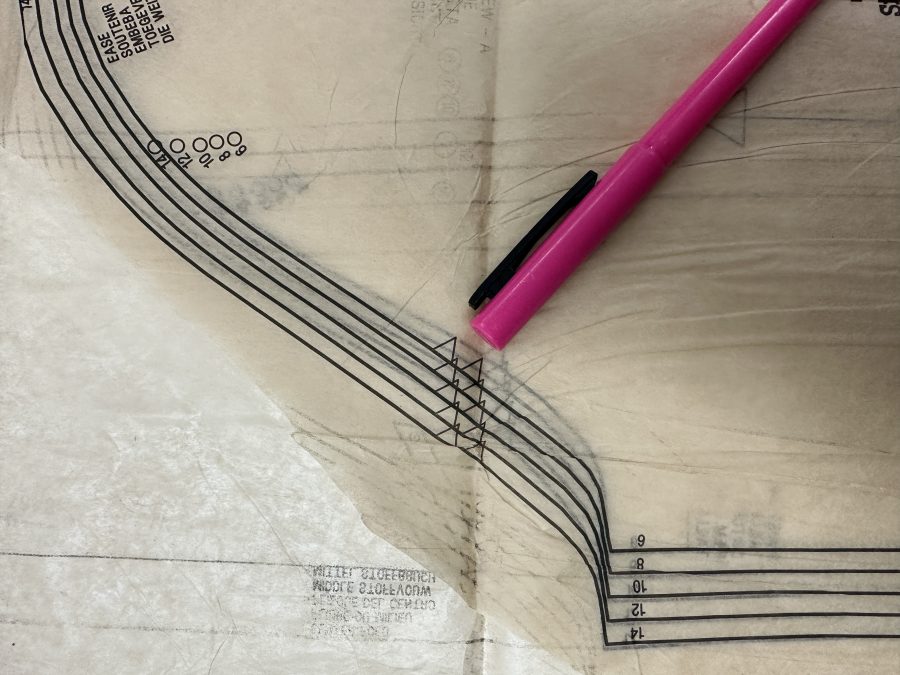
Notches, dots and lengthen/shorten lines actually make it EASIER for a newbie to figure out what goes where. Eliminating those marks does not help!
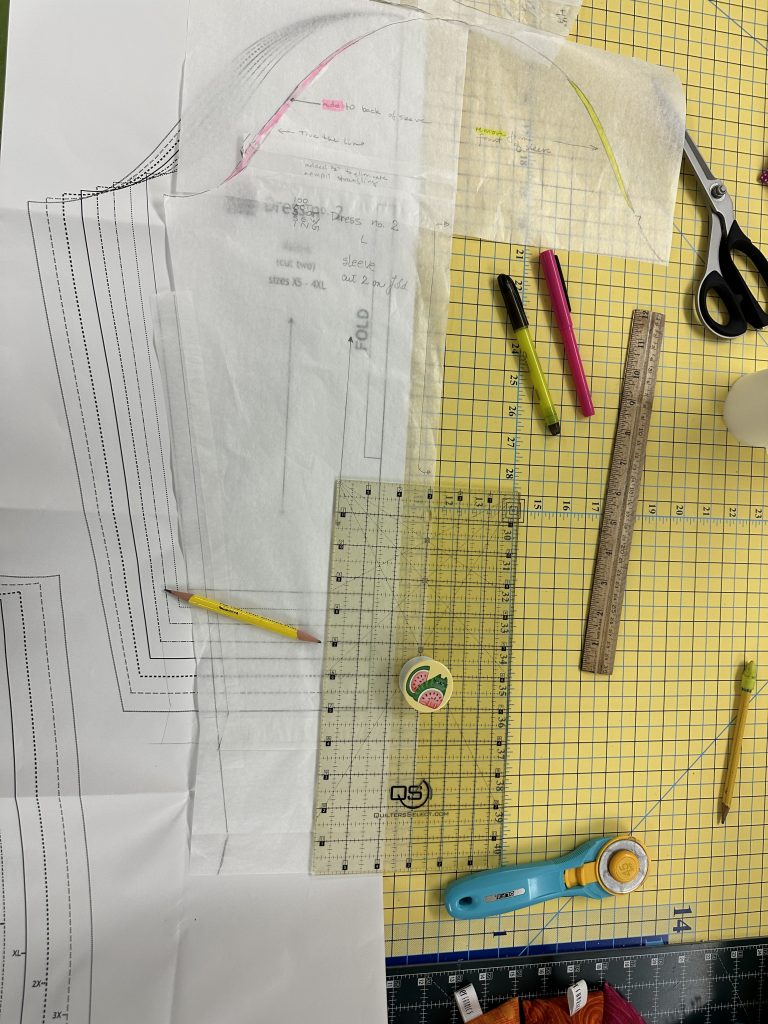
I have cut a sleeve pattern that merges the 100 Acts of Sewing pattern and the Simplicity sleeve pattern. I removed (yellow) from the sleeve cap to eliminate the bubble in the front of the sleeve and added (pink) to add room to move your arms forward. The sleeves on the pattern are described as long, but doesn’t specify if that is halfway down the forearm, 3/4 and/or bracelet length, or full length. I needed to add more, but not quite as much as pictured here.
Flare at the hem, you ask? Why yes…if your sleeve angles out (or pants leg) and gets wider as it goes up, you need to have a hem that does the same. Once you have figured out the correct spot to hem, fold the fabric up on the hemline and trim to match the angle of the seam.
PHEW. So…that’s a lot. Thanks for reading this far–so you get another shot of the finished top, with the infinity scarf on my arm so you can see the top better. Next up: seam finishes, with a couple short videos!
Here are the links to all the posts in this series of lessons, techniques that can be applied to virtually any garment and many home dec projects. Let me know what you’d like to learn and see here on the blog. Cheers and thanks, Sarah
Lesson 1: Choosing a Pattern and Starting Tips
Lesson 2: Making a Muslin, Fitting and Sleeves
Lesson 3: Matching Plaids, Cutting out Your Garment Pieces
Lesson 4: Overcast Seams, just like Serged Seams
Lesson 6: Lapped and Flat-felled Seams
Lesson 7: Hong Kong Finish for Seams

